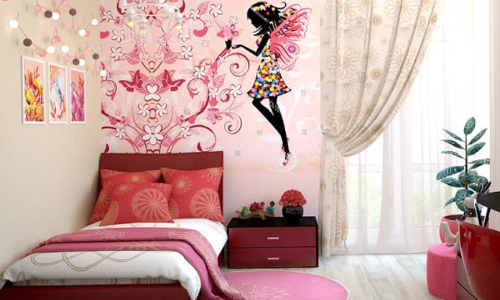De-cluttering for the ideal kid’s room

In many households, no room is a bigger magnet for clutter than a childs bedroom Designers say parents are increasingly interested in managing that clutter effectively and attractively
In many households, no room is a bigger magnet for clutter than a child’s bedroom. Designers say parents are increasingly interested in managing that clutter effectively and attractively.
“Everybody wants their house to look like a magazine and that includes the kids’ rooms,” says Los Angeles designer Betsy Burnham. But her advice to parents: Be realistic about how you and your kids actually live. Be honest, and really ask, “Are we a tidy family? Are we too busy? Do we have too much stuff? It’s OK if you’re not a tidy household.” Once you’ve got those answers, Burnham says, there are lots of storage options out there.
Here, she and two New York-based interior designers Deborah Martin and Fawn Galli, offer advice on creating great kids’ bedrooms that can stay relatively clutter-free. Galli says she hears clients talking about Kondo’s anti-clutter message. But she says parents also want more restful bedrooms for their kids as a response to digital over stimulation and the pace of modern kids’ lives. She says a space can be colourful yet restful if it’s been planned with a consistent colour palette and materials that work well together.
Martin agrees: Choose a neutral colour palette for the major design elements in the room, like furniture and wall colour, she says. Then you can add pops of colour through rugs, bedding and pillows. Burnham also likes the neutral palette for kids’ rooms, where, she says, it’s easy “to overdo it, and think that just because they’re kids they get a brighter palette.”
Another way to create a relaxing feel for kids: Leave open play space. “To maximize their creativity and their imaginative play,” Martin says, “it’s important to have an area where they can actually play in the centre of the room.”
All three designers mentioned the value of beds with storage underneath. Bunk beds or loft beds can be perfect, especially for smaller bedrooms. They also suggest labelling bins and baskets, especially for younger kids. A bookcase with deep shelves is perfect for holding labelled bins and baskets when children are younger, with books on higher shelves.
Martin suggests considering the room from a child’s-eye view and planning storage from the ground up. Keep the most-used items where the child can easily reach them.
Keep your child’s habits in mind: Some kids will fold their clothing Kondo-style and tuck it neatly into drawers. If yours won’t, choose bins or baskets where items like socks and underwear can easily be tossed and kept sorted.
To keep a child’s room from having a “kiddie” vibe that they’ll quickly outgrow, Burnham suggests avoiding primary colours. Also, keep desks and dresser tops relatively clear, Galli says, to keep the space feeling calm and more organized. “It’s a clean canvas,” she says, “to just start fresh at whatever your next project is.”
That might be easier to achieve by having less space rather than more: Desks don’t have to be large, Martin says, since many kids end up doing homework or projects at a kitchen table. A big desk in a bedroom can end up being a multipurpose space where a range of things quickly piles up.
One last bit of advice: Involve kids, especially older ones, in designing a space that fits their personalities. Have it reflect their hobbies and interests, and add items like a wall rail where they can post things like a rotating display of photos.
If your child has his or her heart set on a wild wall colour, Martin says, it may be worth going for it. You can always repaint in a couple of years. Involving kids in their room’s design “creates what you can call ‘pride of place,’” she says. And that might make it more likely they’ll keep the room tidy.















